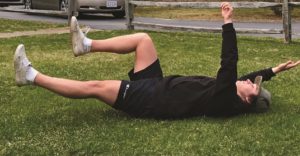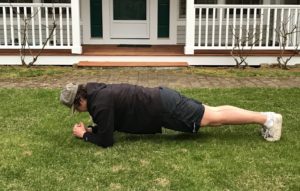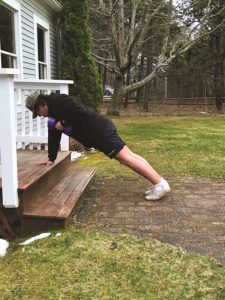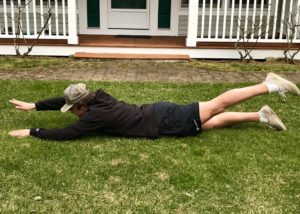If you read my 15-minute workout advice this winter, you know what’s coming. I promised to add a core routine to those basic upper- and lower-body programs. An effective set of core-strengthening exercises is part of the answer to two questions I hear a lot: “What can I do to help with my back pain?” and “How do I get a flat tummy?”
Whatever inspires your desire for a stronger core, it helps to first consider what the term “core” actually means. Anatomically, it’s the entire torso between the hips and shoulders, front and back. Your skeleton provides the framework, and the core muscles can either prevent or cause movement of the spine — twisting or bending forward, back, or sideways. So, your core is more than just the muscles that create the famous “six pack.” There are other layers of muscle in the abdominals, stuff that we don’t see in the mirror. We need to look beyond the belly.
The good news is that better core strength results in less back pain. In terms of aesthetics, though, the much-sought-after toned midsection requires strengthening the underlying muscles along with decreasing the amount of fat on top. That means regular aerobic exercise and sensible eating. Alas, there is no such thing as “spot reducing.”
There are two ways to focus your core exercises. To safely and effectively deal with back pain, focus on stability — the muscles used to prevent motion. The plank is an excellent example.
Those who have no history of back pain can still use stability exercises to strengthen the core muscles. Or they might also venture on to using the muscles to move the spine by doing sit-ups, twists, or crunches.
In general, however, studies of abdominal muscle activation tell us that old school sit-ups are the least effective true core strengtheners. Crunches are a bit better, especially if you do them on a gym ball. Yoga and Pilates can do an excellent job of firing the abs, while also addressing the muscles of the back — it helps to have a good instructor.
For each individual, of course, the best program is the one that is adequately challenging while also minimizing the risk of injury.
A good 15-minute core workout should start with stability exercises. They should be done mindfully, with a conscious effort to feel the action of the core muscles, emphasizing quality over quantity. If you do these for four weeks and you’ve mastered them, you could progress to mobility exercises.
- The Dead Bug. Lie on your back, legs bent and feet flat on the floor, arms reaching up to the ceiling. Tighten your abdominals and back, then extend your right arm and left leg toward the floor, without moving your torso. Return to the starting position and repeat on the other side. Repeat for 30 to 60 seconds. Too easy? Start with the legs bent and the feet in the air (see photo).

Jack Barrio shows off the advanced version of the Dead Bug, starting with knees bent and feet off the ground. (Photos by Kathy Stetson) - Forearm Plank. Lie on your belly, propped on elbows. Curl your toes under and lift your hips, belly, and legs off the floor. Make your body straight from head to heels and focus on drawing your belly button up away from the floor. Start with holding the plank for 10 to 20 seconds and progress to 60.

The forearm plank looks easy. But keeping good form with your body straight from head to heels is surprisingly challenging. - Renegade Row. Grab a small hand weight and get into a plank position, with your hands pushing against a chair or step rather than the floor. Pull the weighted hand back toward your lower ribs by bending your elbow as you squeeze that shoulder blade toward your spine, pause, then slowly lower. Do 8 to 12 reps, then switch sides. To progress, bring hands to a lower surface.

Using a step or chair, the plank is a little easier. Jack shows how to start there for the Renegade Row. - The Swimmer. Lie flat on your belly, arms stretched out in front of you. Without arching your back or rolling, raise your head, chest, right hand, and left leg, then lower. Repeat with the other side. Continue alternating sides for 10 to 30 reps. To progress, raise head, chest, and both arms and legs simultaneously.

Yes, people will think it’s odd that you’re swimming on your front lawn.
Remember, don’t try to push through pain! If anything gives you back or neck trouble, try switching to a less challenging version of the exercise.



